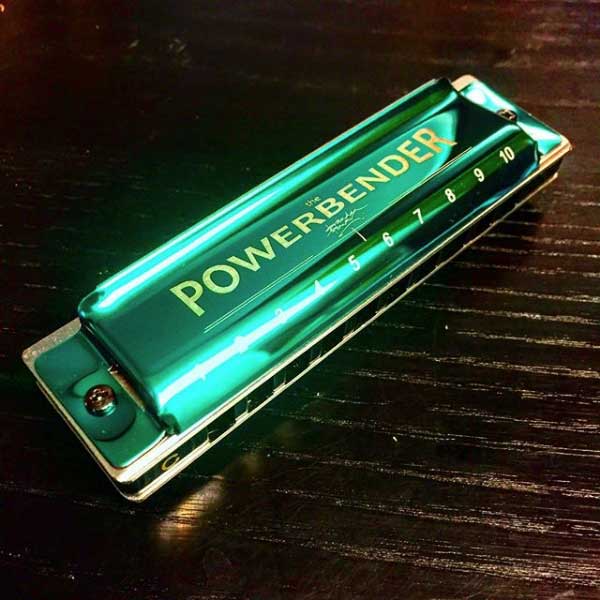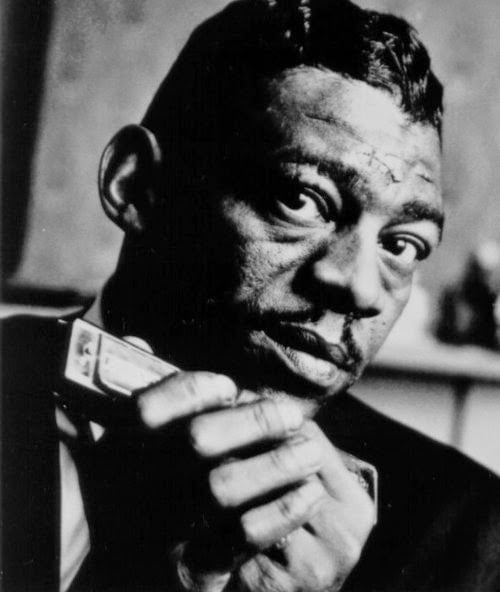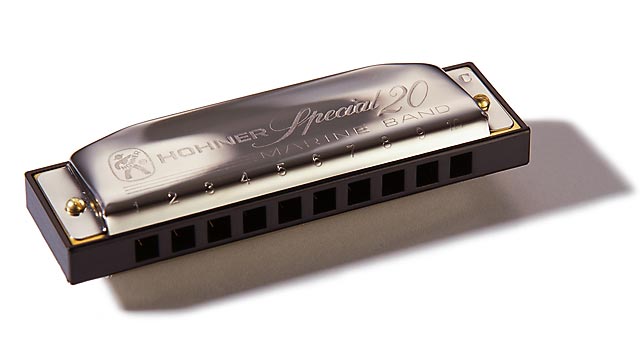It’s easy to get stuck in a rut as a musician. Guitarists often find themselves noodling around the minor pentatonic scale, pianists sometimes find it difficult to move away from their classical training, and drummers frequently bang out the same rhythm again and again (although not always at the same tempo (forgive me for the obvious drummer joke!)).
Harmonica players are no different. In fact, given the limitations of a 10 hole Richter-tuned harp, the average harpist often struggles to venture beyond standard blues licks.
It doesn’t have to be like this, though. There is a wide range of alternate tuning harps out there that can transform your playing from middle of the road to Middle East, and everything in between. Let’s look at a few options.
Minor Tunings
Minor tunings are available in some popular diatonics – the Marine Band and Lee Oskar harps being the most obvious choices. Slightly confusingly, there are two main types of minor tuning – harmonic minor and natural minor (we’ll leave the melodic minor for another day, as it’s not particularly relevant to harp players).
The natural minor tuning is the one that sounds most familiar to Western ears (although anyone who has been classically trained as a pianist will, through learning scales, probably be more familiar with the harmonic minor).
Natural minor keys share exactly the same notes as their relative major. A simple example is the key of C major , which, on a piano, is all of the white notes, and whose relative natural minor – A natural minor – is also (you guessed it) all of the white notes. The only difference is that the tonic (in simple terms, the first note of the scale of the key) is different. For C major the tonic is C, while for A natural minor the tonic is A.
What does this mean for your harp playing, though? Well, for one thing, natural minor tunings provide easy access to the notes you want when playing songs written in minor keys. You may think at this point, “Why don’t I just use my C major harp to play in A natural minor, if all of the notes are the same?” You’d be correct in thinking you’d have access to all of the notes, but the fact that you’d be playing in 4th position to achieve this means that many of the bends you’d probably need wouldn’t be available.
The close relative of the natural minor is the harmonic minor. Most of the notes are shared in both keys, but the harmonic minor raises the 7th scale degree by one semitone. Let’s look at an example:
A natural minor: A, B, C, D, E, F, G
A harmonic minor: A, B, C, D, E, F, G#
This raised 7th has quite a dramatic effect on the feel of your playing, giving it a marked Eastern feel.
Bend Facilitators
There are a number of tunings that I categorise as ‘bend facilitators’, as they don’t have any influence on the fundamental key of the harmonica, but instead rearrange the note pattern to provide access to the notes that you want to bend in places where you are physically able to bend them.
The two most popular tunings of this kind are Powerbender and Powerdraw; both tunings developed by Brendan Power, but available on harps from a Seydel, as well as Brendan’s own models.
Powerbender tuning places the notes that you really need to bend in places where you can easily bend them on the draw. As you can see from the note patterns below, holes 1-4 are the same as Richter, but from 5-10 there are considerable differences, enabling useful draw bends throughout the harp’s range.
You’ll also notice that the available standard notes are the same in both tunings – Powerbender doesn’t alter the key, only the pattern of notes.
Richter
1 2 3 4 5 6 7 8 9 10 -----------------------------
blow: |C |E |G |C |E |G |C |E |G |C |
draw: |D |G |B |D |F |A |B |D |F |A | -----------------------------
Powerbender
1 2 3 4 5 6 7 8 9 10 -----------------------------
blow: |C |E |G |C |D |F |A |C |E |A |
draw: |D |G |B |D |E |G |B |D |G |C | -----------------------------
Powerdraw is something of an amalgam of Richter and Powerbender, maintaining the note pattern of the former for holes 1-6, but using the Powerbender layout for holes 7-10. This gives a more traditional feel in the lower range of the harmonica whilst providing access to more useful draw bends in the upper range.
Melody Maker and Paddy Richter Tuning
These tunings, like Powerbender and Powerdraw, rearrange the note pattern on the harmonica rather than fundamentally changing the key. Unlike Powerbender and Powerdraw, though, they do this not to facilitate bends, but to allow certain types of melodies to be played more easily.
As the name implies, Paddy Richter is designed to facilitate the playing of traditional Irish music. Melody Maker, in comparison, is more suited to Standards and other single note melodies that don’t require blues style bending.
Country Tuning
Country tuning is a variation of Richter, but with the 5th hole draw reed raised a semitone. This provides easy access to the Major 7th scale, which is often used in traditional country music.
Wilde Rock
Designed by Will Wilde to enable the harmonica to play rock-style guitar licks, this tuning is currently only available on Seydel harmonicas. Holes 1-5 are the same as Richter, whilst holes 6-10 are significantly modified in order to give access to a different note pattern on the draw bends.
What Harmonicas are Available in Alternate Tunings?
Here’s a list of all of the harmonicas that we are able to supply in alternate tunings:
Powerbender: Brendan Power Lucky 13, Brendan Power Powerbender, Seydel Session Steel
Powerdraw: Brendan Power Lucky 13, Brendan Power Powerdraw, Seydel Session Steel
Harmonic Minor: Hohner Marine Band, Seydel Session Steel, Lee Oskar
Natural Minor: Hohner Marine Band, Seydel Session Steel, Lee Oskar, Suzuki Manji
Melody Maker: Lee Oskar, Seydel Session Steel
Paddy Richter: Brendan Power Lucky 13, Seydel Session Steel
Country: Hohner Special 20, Seydel Session Steel
Wilde Rock: Seydel Session Steel
Seydel are able to custom tune most of their range of harmonicas to any tuning that you want. If this is of interest to you, please get in contact with us to discuss your requirements.
As ever, any questions or comments, just drop me a line, or post on this blog.
Jonathan




Gives clear idea for diatonic harmonica player how to purchase who had been misguided by posting youtube. Hope you guide us for chromatic too.
Does the C Power Draw play key of C melodies and 2nd position in G? I am so confused I have no idea what to buy. And this site doesn’t have many keys in Power Draw. Any suggestion for me.? I like to play Bb, C, A and F diatonics. i.e. Marine Band, Special 20 or Sydel.
Powerdraws harps are labelled in first position and will play the same keys in other positions that standard Richter tuned harps do.
Cheers,
Jonathan